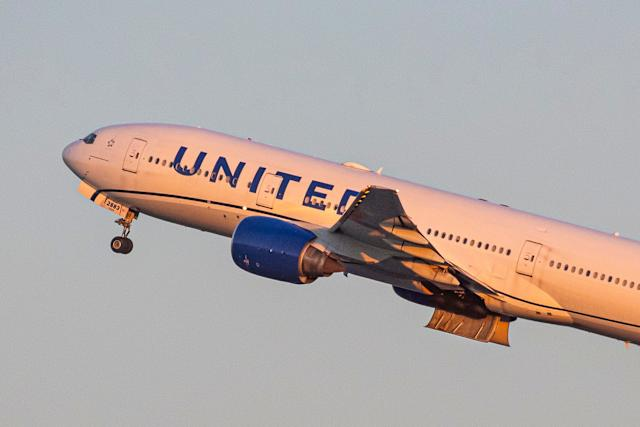US airlines suspend flights to UAE and Qatar, creating global concern among international travelers and businesses. The sudden decision has affected thousands of passengers who regularly travel between the United States and the Middle East, especially those relying on direct airline routes to Dubai, Abu Dhabi, and Doha. Industry experts are now evaluating the causes and consequences of this move.
The suspension was announced late Monday evening by multiple American airline companies, including Delta Air Lines, United Airlines, and American Airlines. While the suspension is temporary, the decision has raised questions about the long-term viability of US-Middle East aviation routes amid rising operational costs and shifting diplomatic landscapes.
Flights Halted: What Prompted the Sudden Suspension?

The main reason US airlines suspend flights to UAE and Qatar is the sharp increase in aviation fuel prices in recent months. The ongoing global energy crisis, combined with political instability in certain oil-producing regions, has raised jet fuel prices by over 40% in the last quarter.
Airline spokespersons have also pointed to logistical bottlenecks and uneven passenger recovery after the pandemic. With reduced profitability on certain long-haul routes, airline management decided to temporarily pause services and reallocate aircraft to more profitable regions.
Another contributing factor is heightened diplomatic strain. US government sources confirmed that there have been growing disagreements on airspace agreements, air traffic rights, and security protocols with both Qatar and the UAE. Though not openly publicized, these tensions have affected operational decisions in the background.
3 Major Reasons Behind the Suspension
Here are the top three reasons why US airlines suspend flights to UAE and Qatar:
- Rising Operational Costs: Fuel accounts for up to 30% of airline costs. Due to global supply chain disruptions and rising oil prices, maintaining direct flights to the Middle East has become less feasible for US airlines.
- Diplomatic Pressures: Although the US maintains strong ties with both Qatar and the UAE, behind-the-scenes disagreements on trade, aviation regulation, and air safety compliance have led to regulatory slowdowns. These tensions have made it harder for US airlines to sustain smooth operations.
- Low Passenger Load and Demand Shift: Post-pandemic trends have shown that more passengers prefer regional travel or one-stop flights with cost-effective pricing. Direct flights to the Gulf, particularly from secondary US cities, have seen lower demand in recent months.
Travelers Affected and Alternative Options
The decision has created difficulties for thousands of travelers, particularly business professionals, students, and expatriates. Many regular passengers are now being redirected through European or Asian airlines, such as Emirates, Etihad, and Qatar Airways, which still operate fully.
For now, travelers must book connecting flights or rely on Middle Eastern carriers to complete their journey. While global carriers remain functional, the lack of US airline participation raises concerns about customer service, loyalty programs, and pricing dynamics.
Some passengers have expressed disappointment over losing their preferred direct routes. “I’ve been flying from New York to Doha twice a month for business. Losing my usual route is a huge inconvenience,” said Ahmed Khan, a frequent flyer with American Airlines.
What This Means for US-Middle East Aviation Ties
This decision, while temporary, could have long-lasting implications. When US airlines suspend flights to UAE and Qatar, it signals a shifting trend in international aviation. In the past decade, competition between US and Gulf carriers has been intense. Gulf airlines such as Emirates and Qatar Airways have gained a significant edge by offering luxurious services and competitive prices.
US carriers, despite their wide networks, have struggled to match the customer service standards and pricing models of their Gulf counterparts. By suspending these routes, American airlines may lose out on a growing Middle Eastern travel market that is expanding in trade, tourism, and technology sectors.
Aviation analysts believe this could be a strategic mistake if the suspension extends beyond a few months. “US airlines risk losing long-term market share and customer loyalty in the Gulf region,” said James Carter, an aviation consultant based in Chicago.
Government and Industry Reactions
US government agencies, including the Department of Transportation, have stated that discussions are ongoing with both Qatar and the UAE to address the underlying regulatory and diplomatic concerns. Meanwhile, the airline industry has urged for transparency and quicker resolutions to avoid long-term damage.
The UAE’s General Civil Aviation Authority and Qatar’s Ministry of Transport have expressed surprise at the US decision. In a joint statement, they emphasized their commitment to open skies agreements and cooperative air traffic solutions.
Both countries have urged US airlines to resume operations as soon as feasible and are offering regulatory support and fuel subsidies to offset current costs.
Timeline for Resumption Remains Unclear

While no official timeline has been confirmed, industry insiders suggest that flights may resume in late 2025, depending on market conditions, fuel prices, and resolution of diplomatic hurdles.
Until then, American passengers will likely depend on code-share agreements or opt for international airlines to meet their travel needs to the Gulf region. Several travel agencies are already updating their packages to reflect the changes and minimize disruption.
Future of US-Gulf Aviation Cooperation
The decision that US airlines suspend flights to UAE and Qatar is not only a setback for travelers but also a signal for broader industry challenges. As the world moves toward sustainable aviation, flexible operations, and global connectivity, such suspensions indicate that airlines must find a balance between profits and global presence.
Both governments and airlines are expected to work together to restore these connections soon. However, in the fast-changing aviation world, delays can lead to permanent shifts in passenger loyalty and business relationships.
Conclusion
The sudden move that US airlines suspend flights to UAE and Qatar may appear temporary, but it has triggered wider debates on airline strategies, global diplomacy, and future aviation trends. While the skies remain open through other carriers, the absence of US airlines on these important routes will be felt by both travelers and the airline industry for months to come.
Also Read – Saudia Won Best Airline Staff Service:Top 5 Reasons



